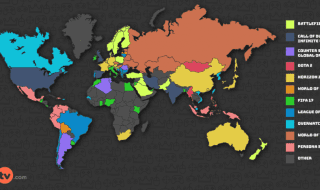
In nonprofit organizations, every resource, whether time, money, or manpower, is a precious commodity. Nonprofits often face the challenge of delivering their mission efficiently, maximizing their impact, and managing operational costs. This is where low-code application development software comes into play, offering a strategic solution to streamline operations and enhance the overall effectiveness of nonprofits. In this blog, we will explore how low-code technology is making a significant impact on nonprofit organizations and how it can help them achieve their goals more efficiently.
Understanding Nonprofits and Their Challenges:

Nonprofit organizations, whether they focus on education, healthcare, social services, or environmental conservation, share common challenges when it comes to operations:
- Limited Resources: Nonprofits typically have limited funding and staff, making it challenging to manage and deliver on their mission effectively.
- Complex Workflows: Nonprofits often deal with complex workflows, from donation management to grant applications and program delivery, which can be time-consuming and error-prone.
- Data Management: Managing and analyzing data to track impact, donor relationships, and program effectiveness is essential, but it can only be overwhelming with the proper tools.
- Adaptability: Nonprofits need to be adaptable and responsive to changing needs, which cumbersome and slow manual processes can hinder.
- Budget Constraints: Keeping operational costs low is crucial, as nonprofits want to allocate most of their funds directly to their mission.
The Role of Low-Code Application Development Software

Low-code application development software solves many challenges by providing a visual interface and pre-built components that simplify the development process. Here’s how low-code technology can streamline operations and increase the impact of nonprofit organizations:
1. Streamlining Administrative Tasks
Nonprofits often spend a significant amount of time on administrative tasks like data entry, donor management, and reporting. Low-code platforms enable the automation of these tasks, freeing up valuable staff time and reducing the risk of errors.
For instance, a nonprofit can build a donor management application that automates capturing donor information, sending thank-you letters, and tracking donations. This not only saves time but also ensures accurate and up-to-date records.
2. Improving Program Management
Managing programs efficiently is a core aspect of nonprofit work. Low-code platforms can help by creating applications that streamline program management tasks such as scheduling, participant registration, and reporting.
For example, a nonprofit working in education can develop a program management application that automates student enrollment, schedules classes and tracks attendance. This reduces the administrative burden on staff, allowing them to focus more on program delivery.
3. Enhancing Donor Engagement

Donor relationships are the lifeblood of nonprofits. Low-code applications can help nonprofits build donor relationship management tools that improve communication and engagement.
By creating a donor portal or an email automation system, nonprofits can keep donors informed about their impact, share success stories, and express gratitude for their support. This not only strengthens donor relationships but also encourages ongoing contributions.
4. Simplifying Reporting and Impact Measurement
Accurate and efficient reporting is essential for nonprofits to demonstrate their impact and secure funding. Low-code platforms can help you create custom reporting and data analysis tools tailored to the unique metrics and goals of each organization.
Nonprofits can develop dashboards and reporting applications that provide real-time insights into their programs, enabling them to measure impact more effectively and make data-driven decisions.
5. Increasing Accessibility
Many nonprofit employees and volunteers may need to gain extensive technical backgrounds. Low-code platforms are curated to be easy to use, making application development accessible to a wider range of staff members.
This means that non-technical staff, such as program managers, can participate in developing applications that directly support their work without the need for extensive coding knowledge.
6. Adaptability to Changing Needs
Nonprofits often need to pivot or adapt quickly in response to changing circumstances. Low-code applications can be modified and updated more rapidly than traditional software. This flexibility allows nonprofits to respond to evolving challenges and seize new opportunities without a significant time or cost investment.
7. Cost-Effective Solutions

Keeping operational costs low is a priority for nonprofits. Low-code development significantly reduces the cost of building and maintaining applications compared to custom development or off-the-shelf software. Nonprofits can invest more of their resources in their mission while still benefiting from powerful custom applications.
Conclusion:
Nonprofit organizations face unique challenges in delivering their mission efficiently and maximizing their impact. Low-code application development software is a valuable tool that allows nonprofits to streamline their operations, automate administrative tasks, and enhance program management, all while maintaining a focus on their core mission. By improving donor engagement, simplifying reporting and data analysis, increasing accessibility to application development, and adapting to changing needs, low-code technology is helping nonprofits achieve their goals more effectively.
As the digital landscape continues to evolve, non profit organizations that embrace low-code solutions will be better equipped to solve the challenges and seize the opportunities of the future. With the right tools, nonprofit organizations can achieve greater efficiency, enhance their impact, and focus on making a positive difference in the world.




